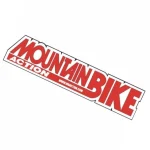Product Test: Cane Creek Double Barrel

The Cane Creek Double Barrel is one talked-about shock. It’s the first bicycle damper to bring the technologies Ohlins has perfected in the moto industry to the bike world. Each Double Barrel is hand-built in their North Carolina factory and dyno-tested before you ever get your hands on it.
Tech Features: The Double Barrel features Twin-Tube technology that is licensed from Ohlins. The Double Barrel technology differs from a conventional damper by directing oil through two separate tubes in the piggyback portion of the body: one for rebound and one for compression damping. The damping is then separated again by two valves in each tube for high- and low-shaft speeds. The advantage is that all four adjustments are fully independent of one another, so a single shim stack does not control the adjustments or their range. The shock is available in lengths from 7.5 inches eye to eye with 2 inches of stroke, all the way up to 10.5 inches eye to eye with 3.5 inches of stroke. It features four-way independent damping for compression and rebound control. It has an 8-millimeter steel shaft and uses spherical mounting hardware where applicable. It’s available with a titanium spring in the larger sizes and with a steel spring in any size.
Our 8.5-inch-long test shock weighed 1.65 pounds with a 2.5-inch stroke measurement and titanium spring. The damper sells for $650 with a steel spring, and titanium springs are available in the larger stroke lengths for an additional $240?$300 (depending on size). Cane Creek can be contacted at (800) 234-2725.

Field test results: Un-box the Double Barrel and you’ll be impressed with the quality. It’s gold-and-black anodized with impressive machine work and enough dials to look at home on a spaceship. Fortunately, it comes with an excellent owner’s and setup manual.
Setup: Our test shock was not original equipment on our bike, leaving the setup to us. We mounted the shock on our Titus El Guapo test bike, which has 6.1 inches of rear-wheel travel and an 8.5-inch by 2.5-inch stroke shock. Our test rider set the spring to 25-percent sag. It should be noted that the damping characteristics on this shock usually require a lighter spring rate. We used a 400-pound spring where we would typically use a 450. Here’s where the fun starts. It’s easy to get in over your head with this shock and end up with a ride quality that is poor or even dangerous. It’s important to follow the setup guide, which will put the adjusters close to the middle of their range. If you get in trouble, it’s best to move all adjusters back to the home position and start again.
Damping performance: The damper’s fully independent adjustments and huge range offer nearly infinite setup possibilities. The shock doesn’t need to be custom-tuned for the bike or rider from the factory, because the end user can achieve the same result with the setup. If you can’t find a setting you like, you’re probably not using the adjustments correctly. The compression and rebound dampers can be used to tune the shock for all types of terrain. We ran our high-speed rebound about a half-turn quicker than recommended to help prevent pack-up on chattery trails. We chose to run the low-speed rebound at the stock setting. You could, however, increase it if you found yourself getting bucked after large impacts. Since we used this shock on a bike designed to be pedaled, we increased the low-speed compression a full turn to combat pedal bob. This only slightly affected the small-bump compliance and provided a great pedaling platform. The recommended high-speed compression setting worked well on our test bike, providing excellent bottom-out control. Overall impact to the bike: This shock is not as easy to tune as a set-it-and-forget-it-style air shock, but simplicity was never the goal of this design. The Double Barrel provides the largest usable adjustment range for the discerning rider. Properly set up, this shock provides more traction and control over the rear suspension than you’ve ever experienced. It is best suited to long-travel bikes, where the performance increase will be worth the slight weight penalty.
Upgrade to titanium spring: A titanium spring will save weight, but may not be worth the extra cost out of the gate. It’s best to find your ideal spring rate using the less-expensive steel springs and then upgrade. It will save you from having a $300 titanium paperweight if you buy the wrong spring.
Our long-term test yielded very positive results. While this is not a typical upgrade for bikes that come with a rear shock tuned for the intended application, it’s a rear shock that can be tuned for nearly any application. The damping on the Double Barrel is effective, and the tuning range is wide enough to accommodate nearly any bike and suspension design. It’s especially applicable to the gravity market, but the shock would excel on an all-mountain bike as well, if you are willing to properly set it up. The weight won’t compete with air shocks, but if you want the ultimate in tuneability, the damping quality and adjustment range of the Double Barrel are unbeatable.







